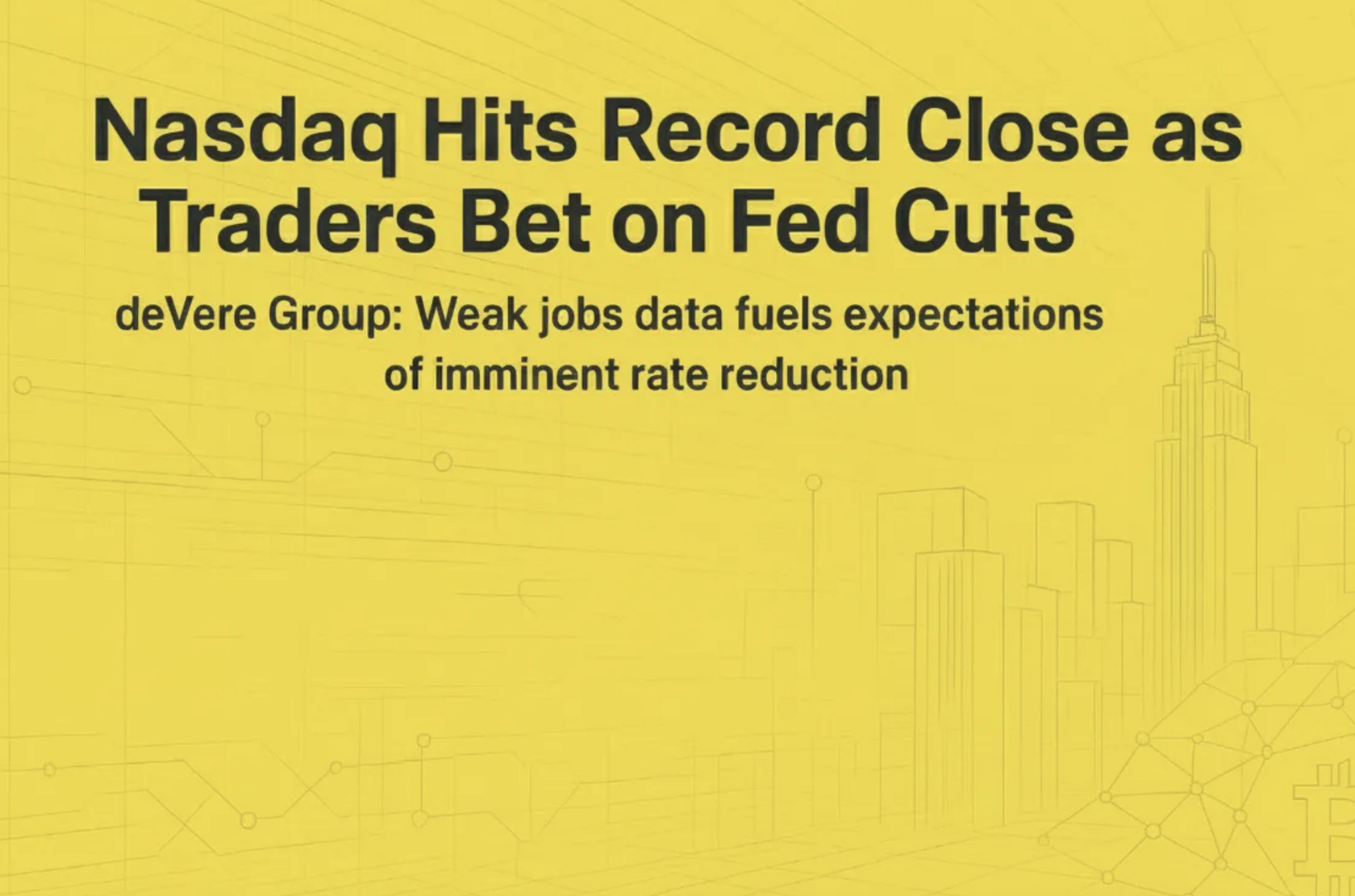Market surge and record close
The Nasdaq Composite closed at a record high on Monday as investors pushed into growth stocks. The index rose 0.45% to finish at 21,798.70, while the S&P 500 gained 0.21% to 6,495.15 and the Dow Jones Industrial Average added 0.25% to 45,514.95, reflecting broad risk-on positioning. Market coverage linked the move to a rotation into tech and cyclical growth names, with traders citing macro data and positioning flows. The close marks a clear short-term victory for risk assets and investor optimism.
Weak jobs data sharpens Fed cut bets
Friday’s softer-than-expected nonfarm payrolls report intensified expectations that the Fed will pivot toward easing. Traders now fully price in a 25 basis point cut at the Fed’s September 17 meeting, and futures imply a smaller probability of a 50 basis point move, after the payrolls shock changed the policy outlook. The Bureau of Labor Statistics data fed into rapid repricing across short-term interest rate markets, and commentary from central bank watchers suggested markets are moving ahead of policymakers.
Yields, futures and downside risks
Bond yields slipped as investors positioned for looser monetary policy, with futures implying a roughly two-thirds chance that rates ease to around 3.5%–3.75% by year-end. This rapid shift amplifies the risk that markets have priced in more easing than the Fed is prepared to deliver, creating a potential vulnerability if upcoming inflation prints surprise to the upside. Traders and strategists warned that a mismatch between market expectations and Fed action could trigger a quick reversal in sentiment.
Breadth, tech leadership and what’s next
Despite the headline Nasdaq strength, market breadth remained narrow, with declining stocks roughly matching gainers in the S&P 500, while the Nasdaq logged 136 new highs driven by concentrated gains in growth sectors. The S&P 500 technology index rose 0.67% on Monday, while utilities lagged, falling 1.07%, underlining the uneven nature of the rally. Attention now turns to upcoming inflation data and payroll revisions later in the week, both of which will be read for confirmation that the labor market slowdown is real. Investors will be watching those prints closely to gauge whether the market’s expectations for Fed easing are justified.
External links: Nasdaq, Bureau of Labor Statistics, Federal Reserve, Reuters Markets, Bloomberg Markets

